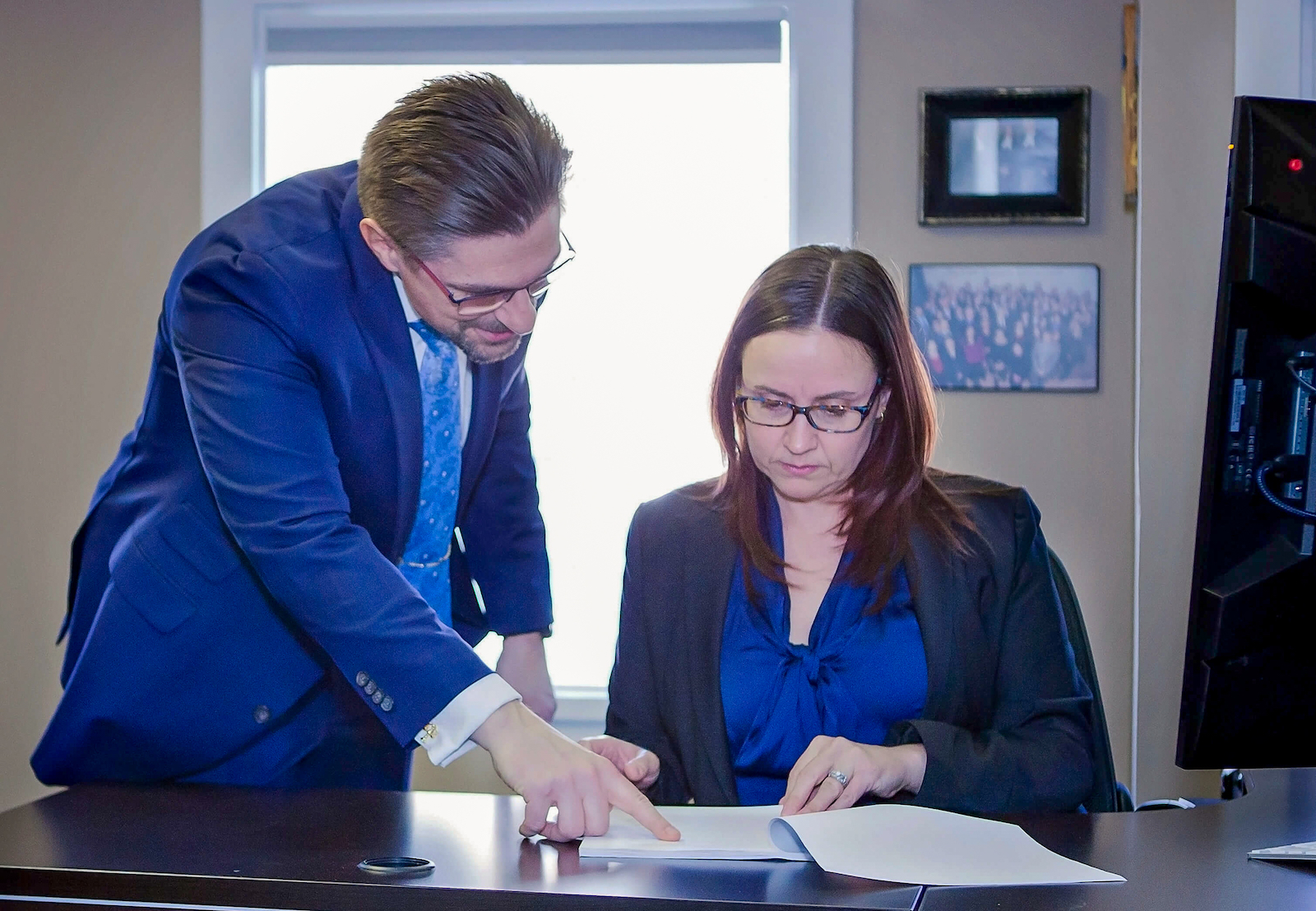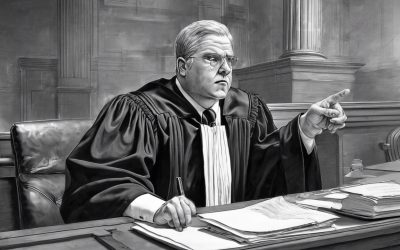This week’s top three summaries: R v Bjil, 2025 SKCA 116: #technology, R v Lessard, 2025 ONCA 760: #NCRMD, R v Krelove, 2025 ONSC 6004: #domestic discharge
R v Bijl, 2025 SKCA 116
[November 13, 2025] Evidence of Functioning Technology: Radar [Reasons by Kilback J.A. with Tholl and Bardai JJ.A. concurring]
AUTHOR’S NOTE: As law enforcement continues to expand its reliance on technology—AI facial recognition, rapid DNA analysis, automated licence-plate readers, and more—courts must remain vigilant. The justice system cannot simply accept the output of a device without proper evidentiary grounding in its reliability, functioning, and correct use. This case illustrates that point using a traditional technology: police speed-radar.
Despite radar being well-established, the Crown was still required to call expert evidence to prove that the device was functioning properly. The police officer had tested the radar unit at the start of his shift using tuning forks, but those forks did not match the frequencies of the radar antennas. Without expert assistance, the trial judge could not know whether the discrepancy in gigahertz mattered—or whether it compromised the reliability of the speed reading.
The Court of Appeal emphasized that this was not an appropriate situation for judicial notice. Courts cannot assume technical knowledge about the relationship between tuning-fork frequencies and antenna frequencies or about their significance to radar accuracy. In the absence of admissible expert evidence establishing proper function, the radar reading could not ground a conviction.
The lesson is clear: as technology grows more complex, the evidentiary burden on the state does not diminish. Courts must insist on proof, not assumptions.
I. INTRODUCTION
[1] Following a trial in Provincial Court, Joka Bijl was acquitted by a justice of the peace [JP] on a charge of exceeding the posted speed limit in a school zone contrary to s. 200(2) of The Traffic Safety Act, SS 2004, c T-18.1 (R v Bijl (26 April 2022) Prince Albert (Sask Prov Ct)). A judge of the Court of King’s Bench sitting as a summary conviction appeal court dismissed the Crown’s appeal (R v Bijl, 2024 SKKB 201 [Decision]).
[3] ….applying the correct standard of review, the result of the appeal to the Court of King’s Bench would have been no different because the JP’s conclusions do not disclose reversible error. Accordingly, I would dismiss the appeal.
[7] The Crown entered two tuning fork test certificates into evidence pursuant to s. 258(2)(a)(i)(B) of The Traffic Safety Act. Under this provision, the certificates are admissible as proof of the facts stated in them if they are dated not more than one year before or after the date of the offence and are signed by a prescribed tester. The certificates stated that on February 19, 2020 (approximately 7 months before the incident), the two tuning forks registered vibration speeds equivalent to 40.48 km/hr and 64.51 km/hr respectively when used with “a KA Band Radar Speed Meter, operating at 34.7 GHz”. The certificates did not state that the tuning forks registered those speeds when used with a radar unit operating at a range of different frequencies. It was not contested that the tuning forks described in the certificates were the ones used by Cst. Lindsay to test the radar on the morning in question.
[8] The Crown also filed a certificate of accuracy issued by the radar manufacturer, which was dated February 13, 2018 (approximately 2.5 years before the incident). The JP determined that this certificate was not admissible under The Traffic Safety Act and could not be accepted as proof of the accuracy of the radar on the date of the offence, primarily because it was dated more than 30 days before the date of the offence and therefore did not meet the criteria in s. 258(2)(a)(ii)(B). However, because it was admitted by consent, the JP accepted that the certificate was nevertheless admissible as proof of the facts stated in it.
[9] The certificate of accuracy indicated that the radar unit used by Cst. Lindsay had two antennas. Antenna #1 operated at a frequency of 34.71 GHz (which appeared to be the same frequency to which the tuning forks were calibrated, though expressed to two decimal points instead of one) and Antenna #2 operated at a frequency of 34.66 GHz….
[10] This evidence that the radar unit had two antennas caused the JP to question whether the Crown had proven that the reading of Ms. Bijl’s speed was accurate. The tuning fork test certificates established that the tuning forks were calibrated to register a specified vibration speed when used with a radar unit operating at 34.7 GHz, and Cst. Lindsay testified that the radar produced the expected speeds when he tested it using those tuning forks. Taken together, this evidence was tendered as proof that Antenna #1, operating at 34.71 GHz, was accurate.[Emphasis by PJM]
[11] However, the certificate of accuracy revealed that Antenna #2 operated at 34.66 GHz, not 34.71 GHz. No evidence had been called to establish that the tuning forks used to test the radar were calibrated for use with a radar unit operating at 34.66 GHz or that the speeds observed by Cst. Lindsay when conducting the test were also expected when used with a radar operating at that frequency. As a result, there was no evidence showing Antenna #2 was tested or that it was accurate.[Emphasis by PJM]
[12] The Crown argued that the difference between the frequencies in the two antennas was insignificant and did not call the accuracy of the radar reading into question because Cst. Lindsay had tested the radar unit using the tuning forks at the beginning of his shift and was satisfied it was working properly….
[13] The JP found he could not determine whether the different frequencies of the two antennas were significant without the assistance of expert evidence. He noted that Cst. Lindsay did not say whether he tested both antennas, or just one, and that he did not say which antenna was used to measure the speed of Ms. Bijl’s vehicle. The JP concluded the Crown may have proven that one antenna was working properly, but it was not known whether that antenna was used to determine the speed of Ms. Bijl’s vehicle. The JP was ultimately left with a reasonable doubt that Ms. Bijl was going over 30 km/h in the school zone and acquitted her of the charge.
B. Expert evidence was required
[25] The next issue is whether the JP erred by finding that expert evidence was required. I see no error in the JP’s determination or the judge’s conclusion to this effect.
[27] The admissibility of expert evidence is a question of law reviewable for correctness, insofar as the proper articulation and application of the legal test is concerned (R v Whitehawk, 2024 SKCA 95 at para 101, 442 CCC (3d) 417, and R v Chung, 2018 SKCA 70 at para 16). For expert opinion evidence to be admissible, it must, among other requirements, be necessary to assist the trier of fact in drawing appropriate inferences (R v Mohan, [1994] 2 SCR 9 (WL) at para 19, and R v Sekhon, 2014 SCC 15 at para 45, [2014] 1 SCR 272). In general terms, it “becomes admissible as an exception to the rule against opinion evidence where it is necessary to provide a ready-made inference which the judge and the jury, due to the technical nature of the facts, are unable to formulate” (emphasis in original, E.G. Ewaschuk, Criminal Pleadings & Practice in Canada, loose-leaf (Rel 8, November 2025) 3d ed (Toronto: Thomson Reuters, 1988) at §16:657 (WL); see also Mohan at para 26). The subject “must be such that ordinary people are unlikely to form a correct judgment about it, if unassisted by persons with special knowledge” (Mohan at para 25, quoting William James Byrne and Andrew Dewar Gibb, Beven on Negligence in Law, 4th ed (London: Sweet & Maxwell, 1928) at 141, as cited in Kelliher (Village) v Smith, [1931] SCR 672 (WL) at para 17). If a judge can form their own conclusions about the subject without help, then the opinion of an expert is unnecessary (see Mohan at para 27, and Sekhon at para 45).
[28] A radar unit “is not an instrument whose performance is deemed by legislation to be accurate. Thus a judge, when relying only on the results generated by a radar unit to ground a conviction for speeding, must be satisfied beyond a reasonable doubt that the results generated by the radar unit were accurate” (R v Abrametz, 2014 SKCA 84 at para 26; see also R v Reagan, 2015 SKQB 33 at para 13).[Emphasis by PJM]
[30] It will generally be open to a trial judge to accept this type of evidence of a successful tuning fork test as proof that a radar unit is accurate, in the absence of other evidence calling the accuracy of the radar into question or otherwise raising a doubt about it. Expert evidence is not always necessary. However, in this case, the manufacturer’s certificate of accuracy revealed the existence of Antenna #2 operating at 34.66 GHz that was not addressed by the Crown’s evidence. This caused the JP to question whether the Crown had proven that the reading of Ms. Bijl’s speed was accurate, for three reasons:
(a) there was no evidence that Cst. Lindsay tested Antenna #1, Antenna #2, or both;
(b) there was no evidence that the tuning forks used by Cst. Lindsay would produce the same readings when used with a radar unit operating at 34.66 GHz, such as Antenna #2; and
(c) there was no evidence of which antenna was used to measure the speed of Ms. Bijl’s vehicle.
[32] ….the JP was saying that he could not draw an inference about whether the different antenna frequencies mattered without the assistance of an expert. I see no error in this conclusion. A trial judge “cannot rely on common sense or take judicial notice of matters that require specialized scientific expertise to understand, in which case expert evidence is required” (R v Neilson, 2019 ABCA 403 at para 24; see also R v D.B., 2022 SKCA 76 at para 26, 415 CCC (3d) 455, and R v Manjra, 2009 ONCA 485 at paras 20–21, 250 OAC 257, leave to appeal to SCC refused, 2010 CanLII 3401).
[33] As noted, the Crown’s argument that the frequency differences were immaterial turned on whether tuning forks calibrated to produce expected readings when used with a radar unit operating at 34.7 GHz would produce the same readings when used with a radar unit operating at 34.66 GHz. Although expert evidence is not always necessary to establish the accuracy of a radar unit, I agree that this narrow question required specialized expertise to understand. It is also not something of which judicial notice could be taken because it is not “so notorious or generally accepted as not to be the subject of debate among reasonable persons” or something that is “capable of immediate and accurate demonstration by resort to readily accessible sources of indisputable accuracy” (R v Find, 2001 SCC 32 at para 48, [2001] 1 SCR 863).The JP did not err in concluding that expert evidence on this point was necessary to draw the inference that the different frequencies were immaterial, as the Crown had argued.[Emphasis by PJM]
[34] The judge came to the same conclusion….
….Although the wrong standard of review was applied, her conclusion on this point was correct and does not disclose reversible error. I would therefore not give effect to this ground of appeal.
V. CONCLUSION
[42] I would dismiss the appeal.
R. v. Lessard, 2025 ONCA 760
[November 7, 2025] NCRMD: Procedural Requirements for a Designation [Gary Trotter J.A., B. Zarnett J.A. and M. Rahman J.A.]
AUTHOR’S NOTE: The troubling reality of the NCRMD regime is that it applies to every offence in the Criminal Code—no matter how minor—and it includes the possibility of indeterminate deprivation of liberty. This case is a stark illustration. After a process in which virtually none of the procedural safeguards were properly observed, an accused facing relatively minor charges found himself under the jurisdiction of the Ontario Review Board for nine years. At no point was he discharged.
The decision serves as an unequivocal warning: NCRMD is not a risk-free alternative to a criminal conviction, nor is it a strategic shortcut for resolving low-level cases. For many accused—especially those without robust advocacy—NCRMD can lead to far more severe and prolonged detention than a conventional conviction would. It should never be pursued lightly, and certainly not without a full appreciation of the long-term supervisory powers of Review Boards.
Simply put: NCRMD is not a defence that results in a “free ride.” It must be approached with extreme caution, particularly outside the context of the most serious, life-sentence-level offences.
[1] On January 26, 2017, the appellant was charged with resisting a peace officer, threatening death, breach of probation, and two counts of assaulting a peace officer.[Emphasis by PJM]
[2] The appellant appeared in bail court and indicated his intention to plead guilty. His case was traversed to plea court. However, the presiding judge had concerns about the appellant’s mental health. The matter was adjourned to the next day, when he was remanded in custody for a 30-day psychiatric assessment.
[3] On February 24, 2017, after the assessment was completed, the appellant appeared in court. The author of the assessment report, Dr. Joel Watts, was of the opinion that, as a result of untreated schizophrenia, the appellant did not know that his actions were wrong when he committed the offences on January 25, 2017. Dr. Watts supported a defence of not criminally responsible on account of mental disorder (“NCRMD”): Criminal Code, R.S.C. 1985, c. C-46, s. 16.
[4] At the same appearance, defence counsel and the Crown jointly submitted the appellant be found NCRMD. The trial judge acceded to this request and made that finding. The appellant has remained under the jurisdiction of the Ontario Review Board since that time – for almost nine years.[Emphasis by PJM]
[5] The appellant appeals the NCRMD verdict based on serious procedural flaws at the hearing, namely: (1) the appellant was not arraigned; (2) no plea was taken; (3) no elections were made on four of the five charges; (4) none of the underlying facts were read into the record; (5) no viva voce evidence was heard; (6) the appellant was not asked if he understood what was about to happen – indeed, he was not addressed or asked to speak at all at the hearing.
[6] The Crown agrees that, as a result of these serious shortcomings, the NCRMD verdict should be set aside.
[7] This court has consistently held that, because of the serious consequences of being found NCRMD, “procedural fairness must be jealously guarded and strictly enforced in this context”: R. v. Ivins, 2024 ONCA 408, at para. 7; R. v. Laming, 2022 ONCA 370, 413 C.C.C. (3d) 409, at para. 42; and R. v. Nahmabin, 2024 ONCA 534, at para. 10. Clearly, that did not happen in this case. The NCRMD verdict must be set aside.[Emphasis by PJM]
[8] The appeal is allowed, the NCRMD verdict is set aside, and a new trial is ordered.






